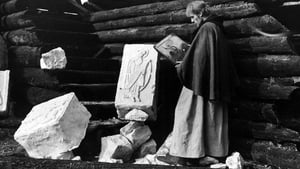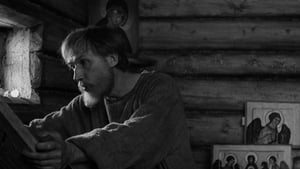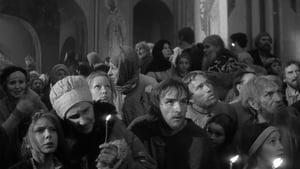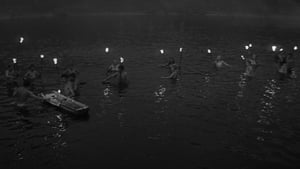Contact: [email protected]
Video Sources 0 Views

Synopsis
[ez-toc]
Introduction
In the vast realm of old movies, where black and white images often dominate our perception of the past, a new wave has emerged – colorization. This article delves into the significance of colorizing old movies, with a special focus on the controversial yet captivating film, “Andrei Rublev Colorized 1966.” Join us as we explore the historical context, artistic merits, and the debate surrounding the restoration of this classic in full color.
Key Takeaway: This article aims to unravel the storytelling power of color, the art and science behind film colorization, the pros and cons of this process, and a detailed case study on “Andrei Rublev Colorized 1966.” Additionally, we’ll touch upon the historical and cultural context of the film, its controversy and reception, the importance of preserving film legacy through color, and finally, the future trends in colorization technology.
Read Media File Transfer Agreement: Terms and Conditions
Read FAQ
The Storytelling Power of Color
Old films, often cherished for their monochromatic elegance, carry a unique charm. However, the introduction of color can unlock a new dimension of storytelling. Color symbolism, emotional impact, and narrative enhancement become powerful tools in the hands of filmmakers. “Andrei Rublev Colorized 1966” leverages this power to breathe fresh life into a tale set against the backdrop of 15th-century Russia.
The deliberate use of color symbolism in the film enriches the viewing experience, emphasizing themes and moods that might have been subtler in the original black and white version. From the vibrancy of religious ceremonies to the somber tones of societal unrest, each color choice adds layers to the narrative, making it a visual feast for the audience.
The emotional impact of color is undeniable. Scenes that were once stark and shadowed now resonate with a vividness that tugs at the viewer’s emotions. The spectrum of color contributes to a heightened sense of engagement, allowing the audience to connect with the characters and their struggles on a more profound level.
Moreover, the strategic use of color enhances the overall narrative. It becomes a storytelling device, guiding the audience through the intricacies of the plot and emphasizing critical moments. Colorization transforms “Andrei Rublev Colorized” into a cinematic masterpiece that transcends its original form, proving that the addition of color can be a tool for storytelling rather than a distraction.
Reviving Film History: The Art and Science of Colorization
The process of colorizing old movies involves both art and science. Film restoration, in general, aims to breathe new life into cinematic gems, and colorization plays a crucial role in this endeavor. Technological advancements have propelled the art of colorization to new heights, ensuring that it is not merely a cosmetic alteration but a meticulous restoration of visual richness.
Film restoration, including colorization, is a meticulous task that demands a deep understanding of the original cinematography. It involves the delicate process of preserving the artistic intent while introducing color in a way that feels seamless and authentic. Advances in technology, from high-resolution scanning to sophisticated color mapping algorithms, have elevated the precision of this craft.
Colorization, once a manual and time-consuming task, has benefited from digital innovations. The ability to precisely control and manipulate each pixel allows for a level of detail and accuracy that was previously unattainable. This fusion of artistic intuition and technological precision is what brings old films back to life in a way that respects the original vision while catering to modern expectations.
Pros and Cons of Colorizing Classic Cinema
The ongoing debate surrounding the colorization of classic cinema revolves around the clash between preserving artistic integrity and providing audiences with a visually engaging experience. Purists argue that altering the original black and white aesthetics jeopardizes the authenticity of the film, diluting the director’s artistic vision.
However, proponents of colorization argue that it opens up these classics to new audiences who might find black and white films less accessible or engaging. Striking a balance between historical accuracy and contemporary appeal becomes a delicate dance for those involved in restoration projects.
In the case of “Andrei Rublev Colorized 1966,” the colorization has been approached with utmost care, preserving the essence of Andrei Tarkovsky’s vision. The challenge lies in maintaining the film’s historical accuracy while ensuring it resonates with a modern audience accustomed to the vibrant palettes of contemporary cinema.
Case Study: Andrei Rublev Colorized 1966
Brief Background
“Andrei Rublev Colorized,” originally released in 1966 and directed by the visionary Andrei Tarkovsky, is a cinematic gem that transcends time. Set against the backdrop of 15th-century Russia, the film follows the life of the iconic Russian iconographer Andrei Rublev, navigating through a tumultuous period marked by political strife and cultural upheaval.
Artistic Vision Behind Colorization
The colorized version of “Andrei Rublev Colorized” is not a mere splash of hues on a black and white canvas; it is a carefully crafted reinterpretation of Tarkovsky’s vision. The decision to colorize this classic was driven by the desire to make the film more accessible to contemporary audiences while preserving its historical and cultural significance.
The color palette chosen for the film reflects the rich tapestry of 15th-century Russia. From the golden hues of religious ceremonies to the muted tones of the Russian landscape, every color has been meticulously selected to enhance the storytelling without overshadowing the original cinematography.
The goal was not to replace the black and white version but to offer a new perspective, inviting viewers to experience the narrative in a different light. It is a testament to the evolving nature of cinema and the creative possibilities that arise when technology meets artistic intent.
The Historical and Cultural Context of Andrei Rublev Colorized
To appreciate the significance of “Andrei Rublev Colorized 1966,” one must delve into the historical and cultural context of the original film. Tarkovsky’s portrayal of 15th-century Russia is a masterful exploration of a turbulent era marked by political intrigue, religious fervor, and artistic expression.
The Soviet Union, where Tarkovsky honed his craft, played a pivotal role in shaping the filmmaker’s approach to storytelling. The subtle nuances and symbolic layers embedded in “Andrei Rublev Colorized” are a reflection of the socio-political climate of Tarkovsky’s time. The colorized version seeks to amplify these layers, providing a fresh perspective on a period that continues to captivate audiences.
The juxtaposition of artistic expression against the backdrop of societal unrest mirrors the struggles faced by filmmakers in the Soviet Union. Tarkovsky’s ability to weave a narrative that transcends time and space is a testament to the universality of human experiences, a quality that remains intact even in the colorized rendition.
Controversy and Reception
The release of “Andrei Rublev Colorized 1966” sparked a debate that transcended geographical boundaries. Western and Eastern audiences found themselves on opposite ends of the spectrum regarding the colorization of this cinematic masterpiece.
Western vs. Eastern Audiences
Western audiences, accustomed to the vivid palettes of contemporary cinema, embraced the colorized version with enthusiasm. The vibrant hues added a layer of accessibility, allowing a new generation to connect with the film on a visceral level. The historical and cultural context, once somewhat distant, became more tangible through the strategic use of color.
In contrast, Eastern audiences, rooted in the tradition of black and white cinema, expressed reservations about tampering with a classic. The purists argued that the essence of Tarkovsky’s vision lay in the subtle interplay of shadows and contrasts, a quality that could be compromised by the introduction of color. The clash between these contrasting perspectives highlighted the subjective nature of film appreciation.
Critical Response
Critics, too, found themselves divided over the colorized release of “Andrei Rublev Colorized.” Some applauded the effort to breathe new life into a classic, commending the meticulous approach to colorization that retained the film’s integrity. Others, however, questioned the necessity of tampering with a cinematic masterpiece, emphasizing the timeless beauty of the original black and white version.
The controversy surrounding the film’s colorization did not overshadow its artistic merits. The performances of the cast, led by the talented Anatoliy Solonitsyn as Andrei Rublev Colorized, remained a focal point of praise. The storytelling prowess of Tarkovsky, regardless of the color palette, continued to resonate with audiences, proving that the essence of a great film transcends its visual presentation.
Preserving Film Legacy Through Color
The colorization of “Andrei Rublev Colorized 1966” brings forth an essential question: does colorization help or hinder the preservation of a film’s legacy? While purists argue that it compromises the authenticity of the original, proponents believe it revitalizes old movies, making them more accessible to contemporary audiences.
Preservation goes beyond mere restoration; it involves ensuring that the cultural and historical significance of a film reaches new generations. Colorization becomes a tool in this preservation process, allowing classic cinema to bridge the gap between the past and the present. It invites a diverse audience to engage with cinematic masterpieces that might otherwise remain confined to the niche of cinephiles.
The debate, therefore, extends beyond the technical aspects of colorization to the broader question of how we define and preserve our cinematic heritage. While black and white films hold a certain nostalgic charm, colorization opens doors to a wider audience, fostering an appreciation for the artistry and storytelling prowess of bygone eras.
The Future of Colorization Technology
As we navigate the 21st century, the future of colorization technology looks promising. Emerging trends, driven by advancements in artificial intelligence and machine learning, offer new possibilities for enhancing color in cinema. The marriage of technology and artistry continues to evolve, presenting filmmakers with tools to push the boundaries of visual storytelling.
AI-driven colorization opens avenues for recreating historical accuracy with unparalleled precision. Algorithms can analyze the original cinematography, understand the director’s intent, and apply color in a way that feels organic and true to the period. This ensures that future colorization projects strike a delicate balance between artistic interpretation and historical fidelity.
The potential for AI to revolutionize colorization extends beyond historical films. Contemporary filmmakers can explore innovative ways to use color as a narrative device, pushing the boundaries of visual storytelling. The future promises a dynamic interplay between human creativity and technological advancements, ushering in an era where colorization becomes a seamless part of the filmmaking process.
Conclusion
“Andrei Rublev Colorized 1966” stands as a testament to the evolving landscape of old films and the controversial yet captivating realm of colorization. As we navigate the intricate dance between preserving artistic integrity and embracing technological advancements, the film invites us to appreciate the diverse approaches to film restoration.
Whether one finds solace in the timeless elegance of black and white preservation or embraces the vibrant reinterpretation offered by colorization, the essence of great cinema persists. “Andrei Rublev Colorized” urges us to transcend the boundaries of time and geography, celebrating the universal language of storytelling.
In the end, the choice between black and white and colorized versions becomes a matter of personal preference. As we explore the rich tapestry of Russian cinema through the lens of Andrei Tarkovsky, let us cherish the diverse hues that colorization adds to our cinematic journey. It’s not just about the past; it’s about how we shape the future of our cinematic heritage, blending tradition with innovation to create an enduring legacy for generations to come.


























